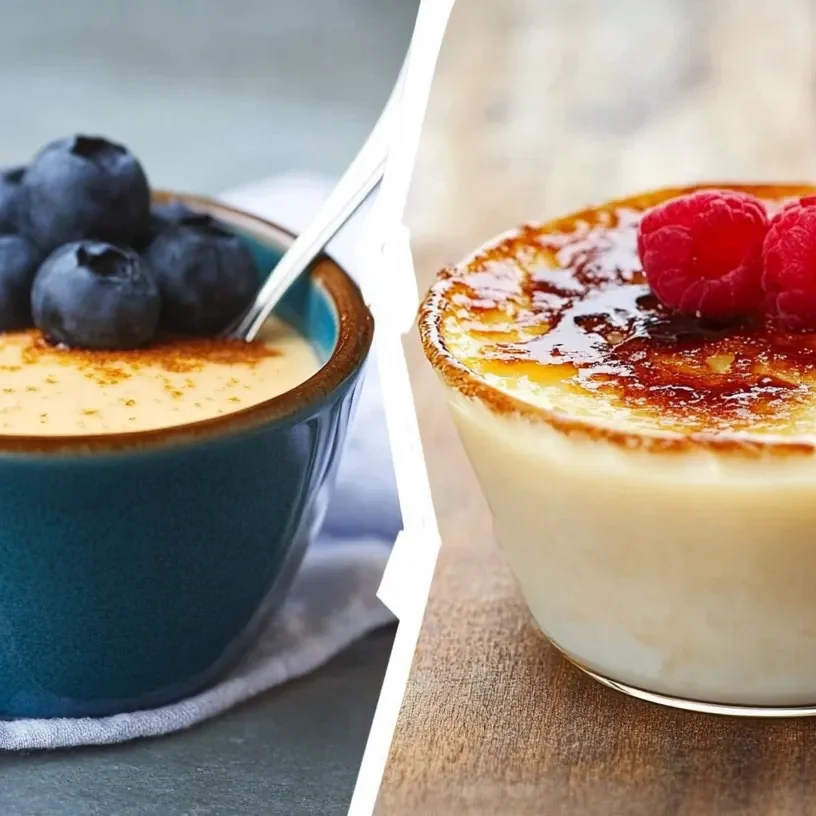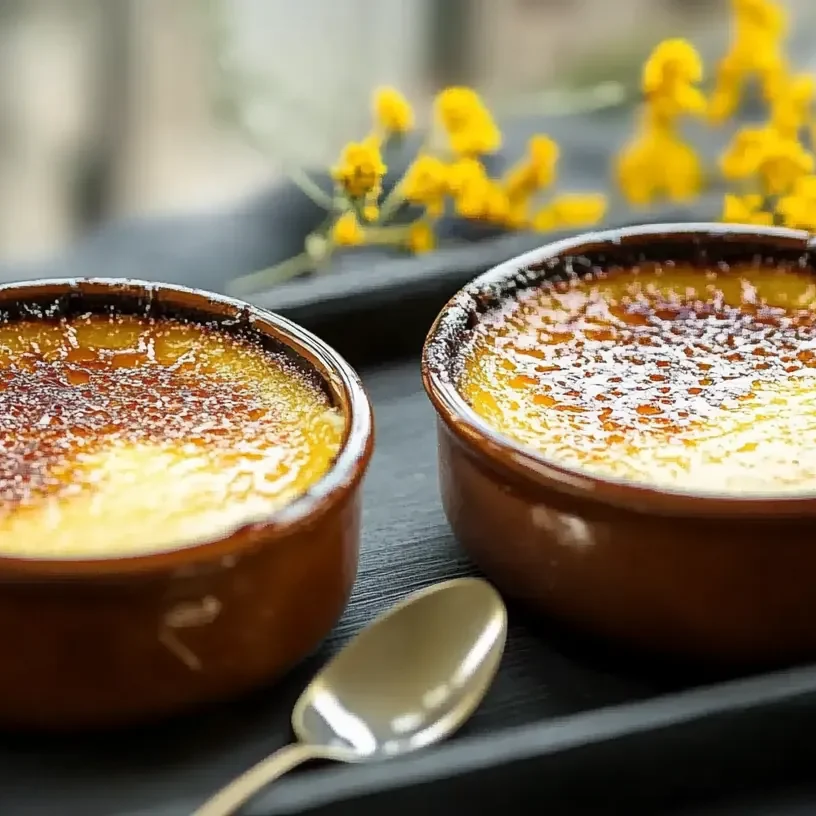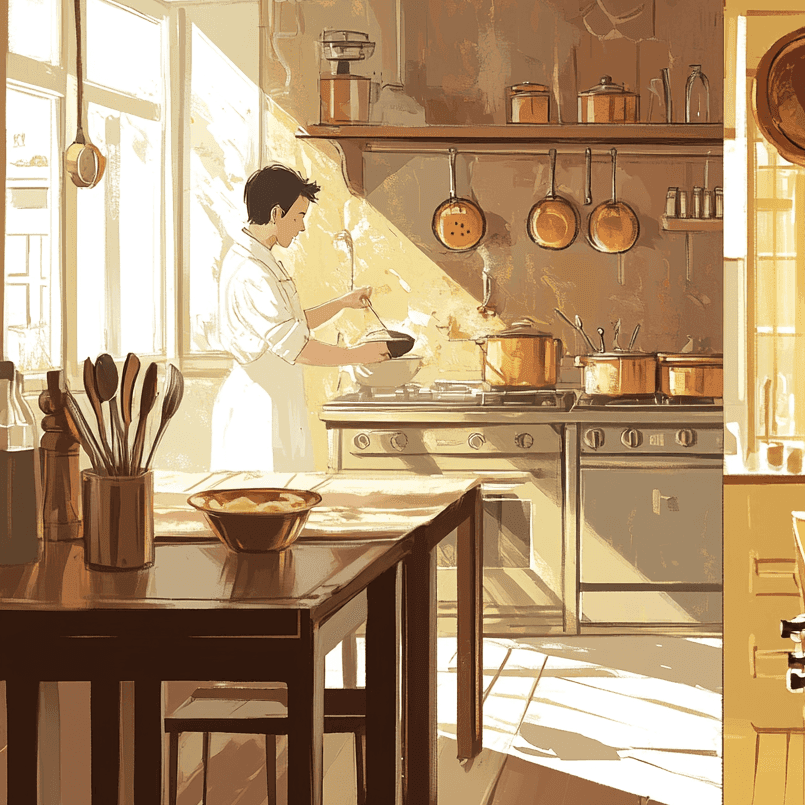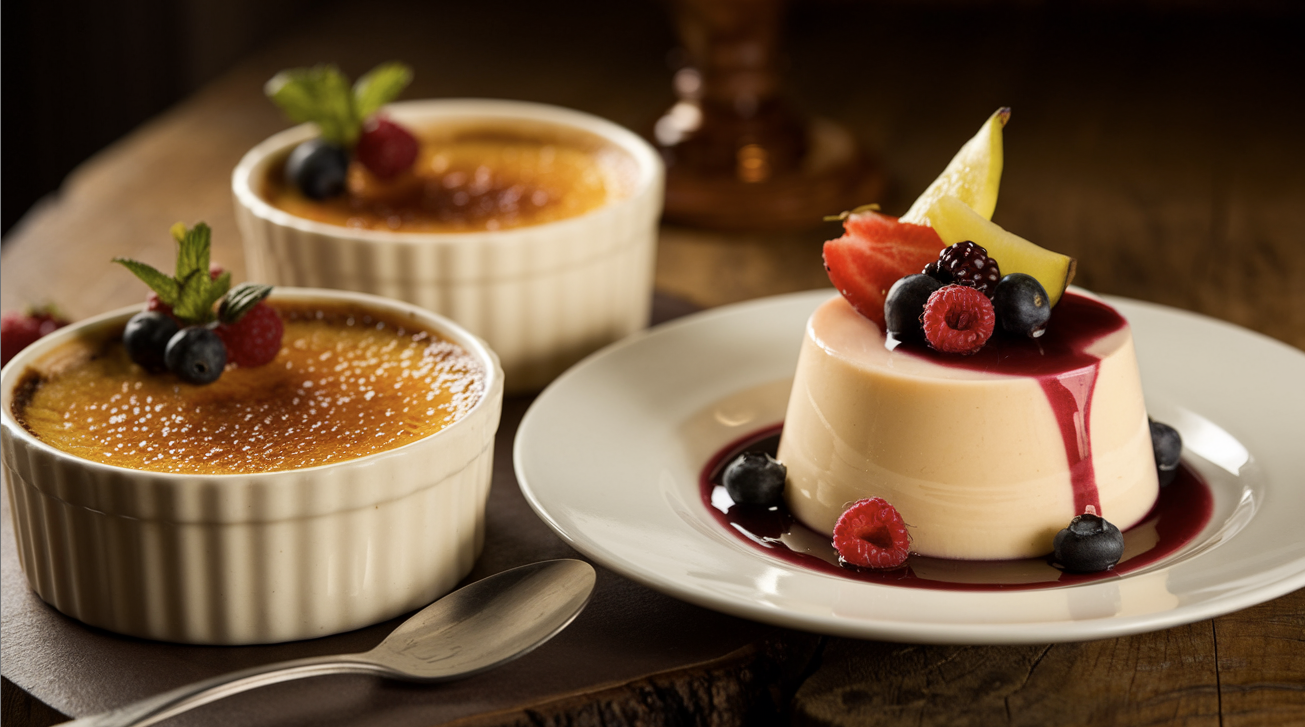If you’ve ever stood in front of a dessert menu, torn between a silky Crème Brûlée and a luscious Panna Cotta, you’re not alone. The “Crème Brûlée vs. Panna Cotta” dilemma is real, my friend, and honestly, it’s a pretty sweet problem to have! Today, I’m diving into the delicious world of custard desserts to help you not only understand the difference between crème brûlée and panna cotta but also to bring you a foolproof crème brûlée recipe and an easy panna cotta recipe you can whip up in your own kitchen.

Why You’ll Love This Crème Brûlée vs. Panna Cotta Guide
Life’s too short to wonder “what’s the difference” when you could be savoring creamy desserts at home! Whether you’re planning a dinner party or just want to treat yourself after a long day (because, hello, you deserve it), these two recipes are your ticket to becoming the queen of custard desserts.
Ingredients You’ll Need
For the Classic Crème Brûlée:
- 2 cups heavy cream
- 5 egg yolks
- 1/2 cup granulated sugar (plus extra for topping)
- 1 teaspoon pure vanilla extract
- Pinch of salt
For the Simple Vanilla Panna Cotta:
- 2 cups heavy cream
- 1/2 cup whole milk
- 1/2 cup granulated sugar
- 1 tablespoon unflavored gelatin
- 1 teaspoon pure vanilla extract
How to Make Classic Crème Brûlée
- Preheat your oven to 325°F.
- In a saucepan, heat the cream over medium heat until it just begins to simmer. Remove from heat.
- In a bowl, whisk the egg yolks, sugar, salt, and vanilla together until light.
- Slowly pour the warm cream into the egg mixture, whisking constantly. (Slow is key here, so you don’t end up with scrambled eggs!)
- Pour the mixture into ramekins and place them in a baking dish. Fill the dish with hot water halfway up the sides of the ramekins.
- Bake for 35-40 minutes until set but still a little wobbly in the center.
- Cool, then chill for at least 2 hours.
- Just before serving, sprinkle sugar evenly over the tops and use a kitchen torch to caramelize until golden and crisp.
How to Make Easy Panna Cotta
- In a small bowl, sprinkle gelatin over milk and let it stand for 5 minutes.
- In a saucepan, combine cream and sugar and heat until sugar is dissolved and bubbles form around the edges.
- Remove from heat, stir in the gelatin mixture and vanilla.
- Pour into molds or serving glasses.
- Chill for at least 4 hours, or overnight if you can wait!
The Real Difference Between Crème Brûlée and Panna Cotta
In a nutshell, crème brûlée is a baked custard, thanks to those lovely egg yolks, while panna cotta is more like a creamy gelatin dessert. Both are rich and dreamy, but crème brûlée has that iconic caramelized sugar top (aka, the best part), and panna cotta is all about silky-smooth simplicity.
Tips for the Creamiest Desserts
- Slow and steady wins the race: Heat your cream gently to avoid scorching.
- Sieve your custard: Straining before baking keeps your crème brûlée ultra-smooth.
- Unmolding panna cotta: Dip the mold briefly in hot water to release it without drama. (Because no one needs drama at dessert time.)

A Little Story from My Kitchen
I still remember the first time I made crème brûlée. I was about 14, and totally fascinated by the idea of using a blowtorch in the kitchen. It felt like a rite of passage! I caramelized that sugar with so much pride (and maybe a little too much enthusiasm), and even though my first batch had a few “extra golden” spots, my family ate it with big smiles anyway. Lesson learned: it’s about the love you pour into it, not perfection.
FAQs About Crème Brûlée and Panna Cotta
Can I substitute milk for cream? You can for panna cotta, but for classic crème brûlée, stick with heavy cream for that luxurious texture.
How can I store leftovers? Both desserts can be stored covered in the fridge for up to 3 days. Bonus: they taste even better the next day!
Is panna cotta supposed to be jiggly? Yes! It should have a little wiggle but hold its shape.
When it comes to the “Crème Brûlée vs. Panna Cotta” debate, there’s really no wrong answer. Whether you crave the crackly joy of a classic crème brûlée or the melt-in-your-mouth bliss of an easy panna cotta, both custard desserts bring a little magic to your table. So why not make both? Your tastebuds (and your inner pastry chef) will thank you!

Recipes You Might Like
For a simple yet delicious comfort meal, try this 5-Step Chicken and Dressing Recipe. It’s perfect for family dinners, just like Ultimate Baked Beans with Ground Beef or Million Dollar Ravioli Casserole.

